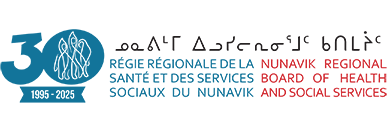The occupational-health team’s primary task is to support employers and workers in the prevention of work-related health problems. Its principal activities are to:
- identify the health hazards to which workers are exposed;
- inform workers and employers of the health effects of the hazards present as well as the preventive measures to establish;
- ensure, as needed, application of the required medical monitoring measures;
- serve as source of information on the occupational-health statutes and regulations;
- see to maintaining adequate first-aid services to respond to emergencies.
The occupational-health team also ensures application of the program For a Safe Maternity Experience in order to protect the health of pregnant or breast-feeding workers.
Services offered
- The program For a Safe Maternity Experience for pregnant or breast-feeding workers
- Health programs designed and applied for the categories of establishments deemed as priorities
- Response to routine service requests from the various work environments
Criteria for accepting requests
The criteria for accepting requests are based on:
- territorial or provincial jurisdictions;
- possibilities for intervention according to, among other things, resources, expertise and duration;
- priorities for intervention established according to the potential seriousness of the problem and the number of individuals affected by the problem.
For a Safe Maternity Experience
The Act respecting occupational health and safety provides for an assessment of the workstation and tasks of pregnant or breast-feeding workers.
If you are pregnant:
- If you suspect a hazard to your health or that of your unborn child, consult your family physician.
- After an assessment by your family physician, the latter may recommend, depending on the case:
- modification to your workstation or tasks;
- assignment to a risk-free workstation;
- preventive withdrawal.
The Commission des normes, de l'équité, de la santé et de la sécurité du travail (CNESST) [Occupational health and safety board] decides on the admissibility of the application for preventive withdrawal and your right to income-replacement benefits.
Medical recommendations
For information on adequate conditions for workstations of pregnant workers, consult the document.
Health Programs
Identification and evaluation of health hazards
Monitoring of workers’ health
Information on health hazards and required preventive measures
Support for organization of first response and first aid
The occupational-health team designs and applies occupational-health programs adapted to the establishments. For that purpose, it works jointly with the employer, the health and safety committee, and the workers. These programs aim at:
1° Identification and evaluation of health hazards
This important step of the program’s application permits identifying and evaluating the health hazards to which workers could be exposed in an establishment. All cases are dealt with confidentially by the occupational-health team.
The nature of the hazards evaluated may be:
- physical (noise, temperature, lighting);
- chemical (gases, fumes, dust);
- biological (mould, bacteria);
- ergonomic (work postures, repetitive movements).
2° Monitoring of workers’ health
This second step consists of preventing and detecting any health problem among the workers, according to the hazards identified and evaluated in the previous step. Problems are detected through:
- occupational background (tasks, previous jobs);
- questionnaires;
- screening tests;
- physical examinations.
As needed, workers are medically followed up for the entire duration of the health program. All medical records will be dealt with confidentially by the occupational-health team.
3° Information on health hazards and required preventive measures
The occupational-health program also provides information on:
- the hazards present and their effects on health;
- the means to prevent, control or eliminate the health hazards (examples: substitution of toxic products, ventilation, extraction);
- personal protective equipment.
4° Support for organization of first response and first aid
The occupational-health team advises the establishments on the organization of first-response and first-aid services in accordance with the First-aid Minimum Standards Regulation. The team advises on:
- the number of first-aiders required;
- the number of kits required as well as their content and location;
- maintenance of a first-aid log;
- the appropriate emergency communications system.
Routine Service Requests
The occupational-health team assists workplaces in managing specific occupational-health problems.
Requests for services must be jointly formulated by the employer and the workers.
Intervention under the occupational-health program is limited over time and covers only the problem that is the object of the request.
Calls for an intervention request are forwarded to an occupational-health technician, who performs the assessment. At this step, there are three possibilities:
- the information may be provided by telephone or documentation may be sent by mail;
- the required intervention may be urgent, concern a problem of indoor-air quality or an industrial problem (chemical, physical or biological contaminant), or concern an issue of ergonomics;
- the request for service may be forwarded to other resources (Department of Public Health, CNESST, municipal, provincial or federal organizations, etc.).
